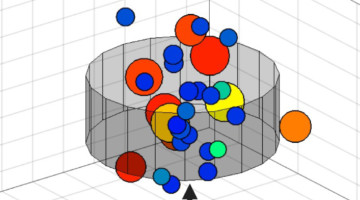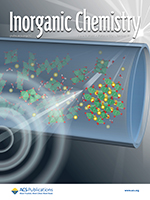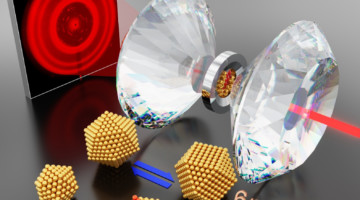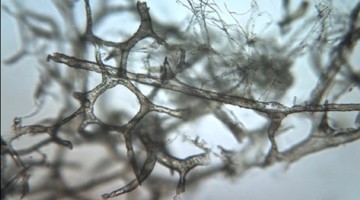Scientists have designed a new material system to overcome one of the biggest challenges in recycling consumer products: mixed-plastic recycling. Their achievement will help enable a much broader range of fully recyclable plastic products and brings into reach an efficient circular economy for durable goods like automobiles. Read more »
Improving the Efficiency of Atmospheric Water Harvesting
Researchers traced the step-by-step path of water-molecule uptake in a porous compound, then made pinpoint modifications to shape the material’s water-sorption behavior. The results led to improvements in the compound’s efficiency at harvesting water from the air, an important step toward alleviating water shortages in the future. Read more »![]()
![]()
Hardening Effects in Superhard Transition-Metal Borides
Novel superhard materials with exciting potential for applications in cutting tools and abrasives can be designed by combining incompressible transition metals with boron to create phases like WB4, pictured here. Diamond-cell-based high-pressure radial diffraction enables the direct study of lattice specific mechanisms for hardening. Read more »
Atomic-Scale Insights into Nickel Exsolution on LaNiO3 Catalysts via In Situ Electron Microscopy
In situ electron microscopy provides atomic-scale insight into the dynamic structure evolution of LaNiO3 perovskite during vacuum heating. This research established a sequential two-step process in the decomposition of LaNiO3 and gives evidence of the diffusion pathway for the lattice oxygen released during the perovskite decomposition. Read more »
Mineral Microstructures Shed Light on Planet-Scale Dynamics
To explore what happens to minerals under the extreme conditions in Earth’s mantle, researchers developed an x-ray technique that bridges the gap between methods that reveal bulk properties and those that focus on individual crystals. Use of the technique has shed light on the dynamics of tectonic-plate subduction in Earth’s lower mantle. Read more »
Understanding the Hydrothermal Formation of NaNbO3: Its Full Reaction Scheme and Kinetics
To understand and tune the properties of hydrothermally produced NaNbO3, the reaction was studied in situ with powder x-ray diffraction, small-angle scattering, and total scattering with pair-distribution function analysis. The full reaction scheme and kinetics were revealed, showing two different temperature-dependent growth mechanisms. Read more »
Stress-Induced Structural Transformations in Gold Nanocrystals
Metallic nanocrystals are widely used in catalysis, electronics, photonics, and sensing applications, but our understanding of their stability under operational stresses is limited. These studies of gold nanocrystals at high pressures found that large-scale structural transformation is possible and must be considered at the nanoscale. Read more »
Small but Still Mighty: Ultrafine Grains Produce Ultrastrong Metals
Researchers used in situ high-pressure diffraction to resolve a debate about whether a metal’s strength increases or decreases when its grain size decreases below a critical point. The results indicate that ultrastrong metals for future applications can indeed be achieved through grain-size refinement and grain-boundary engineering. Read more »
Time‐Dependent Cytotoxic Properties of Terpyridine‐Based Copper Complexes
The cover feature picture shows the progressive activation of terpyridine‐based copper(II) compounds that are not cytotoxic against various cell lines after 24 h of incubation but become highly efficient after 72 h of incubation, with IC50 values in the low‐micromolar to nanomolar range. Read more »
Survival of T. rex Microvascular Structures from Deep Time
Researchers used several analytical techniques at the ALS to demonstrate how soft-tissue structures may be preserved in dinosaur bones, countering long-standing scientific dogma that protein-based body parts cannot survive more than one million years. Read more »









